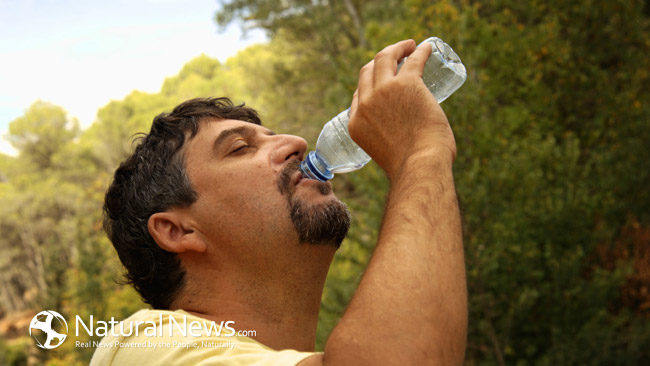Bottled water is often associated with health and cleanliness. A major concern in the mainstream in recent years has been the presence of BPAs (Bisphenol A), chemicals that leach off plastic containers and contaminate the food or liquid inside and cause problems spanning hormonal issues, migraines, obesity, birth defects, and even cancer. But BPAs are only the tip of the iceberg, for the vast majority of chemicals in bottled water are not only not yet known, but haven’t yet been studied for potential health hazards, until recently.
A 2013 German study found that bottled water is contaminated with nearly 25,000 different chemicals on average, after examining 18 different brands that had a mean number of 24,520. These chemicals are not harmless. The scientists were unable to identify the direct effects of each single chemical, but they did make strong conclusions about the net overall effect of consuming these common brands of bottled water.
They found that 13 out of 18 had serious antiestrogenicity effects, and 16 out of 18 waters were antiadrogenic, meaning they caused disruption of male hormones and reproductive organs, by reducing the functionality of androgen receptors by as much as 90%.
Because this study only focused on the hormonal effects of bottled water chemicals, it did not make conclusions about the potential harms on the rest of the body. More importantly, the scientists noted that more must be done, because lack of research up to this point has allowed plastic manufacturers and distributors to go largely unregulated, a key issue they emphasized:
“Applying a novel approach to combine biological and chemical analysis this is the first study to identify so far unknown EDCs in bottled water. Notably, dioctyl fumarates and maleates [broad classes of chemicals] have been overlooked by science and regulation to date. This illustrates the need to identify novel toxicologically relevant compounds to establish a more holistic picture of the human exposome.”
It’s almost impossible to avoid drinking anything out of a plastic bottle at one point or another, so at this point, it’s important at least to use a BPA-container when available. If you buy a drink at a store, you can minimize your exposure to leached chemicals by sticking to plastic bottles that are labeled with a “1” or at worst a “2” at the bottom. These numbers reflect the quality and strength of the plastic used, and thus their varying propensities to leak chemical residues into the contained liquid.
Sources:
http://www.plosone.org/article/info%3Adoi%2F10.1371%2Fjournal.pone.0072472





